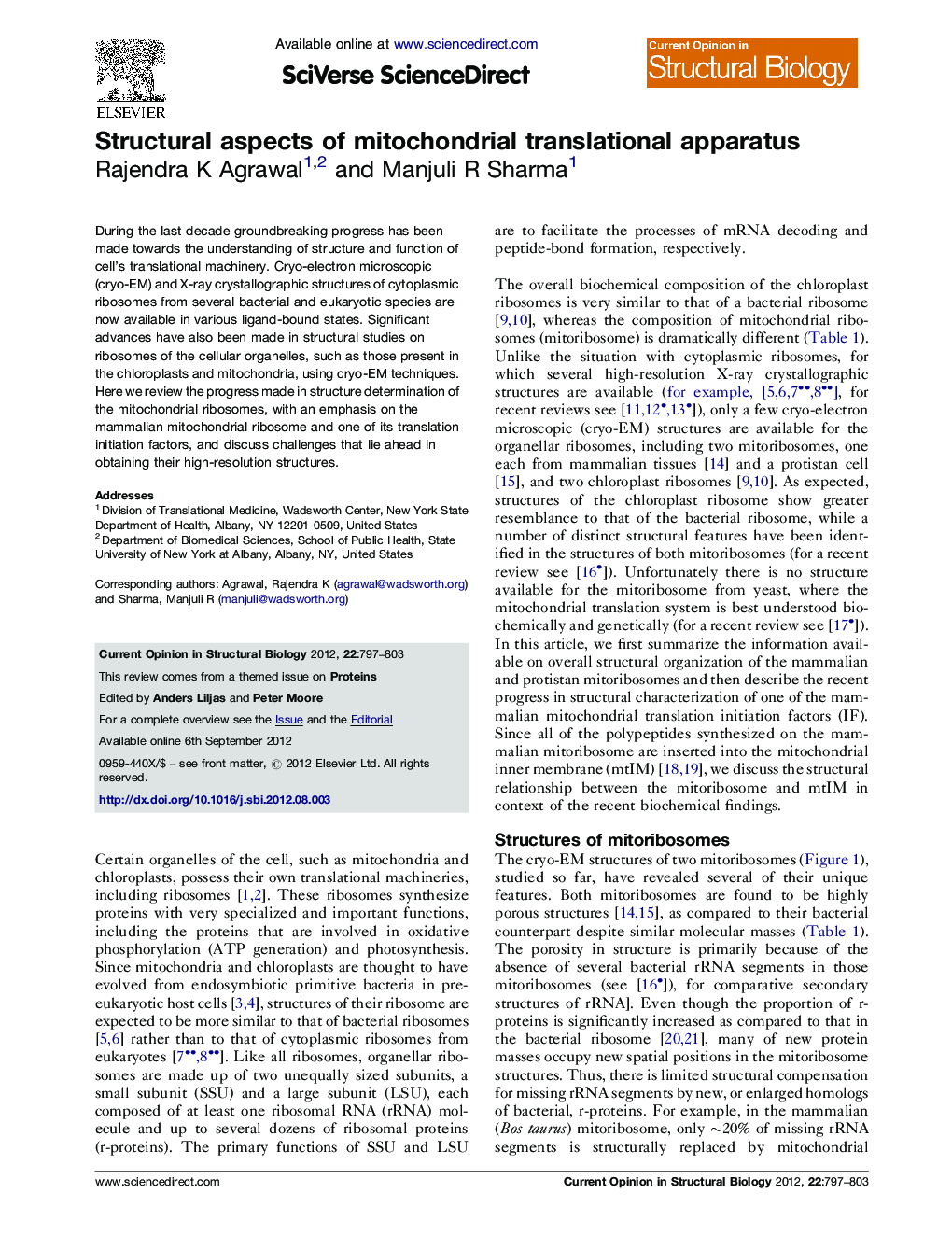| Article ID | Journal | Published Year | Pages | File Type |
|---|---|---|---|---|
| 1979379 | Current Opinion in Structural Biology | 2012 | 7 Pages |
During the last decade groundbreaking progress has been made towards the understanding of structure and function of cell's translational machinery. Cryo-electron microscopic (cryo-EM) and X-ray crystallographic structures of cytoplasmic ribosomes from several bacterial and eukaryotic species are now available in various ligand-bound states. Significant advances have also been made in structural studies on ribosomes of the cellular organelles, such as those present in the chloroplasts and mitochondria, using cryo-EM techniques. Here we review the progress made in structure determination of the mitochondrial ribosomes, with an emphasis on the mammalian mitochondrial ribosome and one of its translation initiation factors, and discuss challenges that lie ahead in obtaining their high-resolution structures.
► We reviewed structures of mitochondrial ribosomes, which are significantly different from their cytoplasmic counterparts. ► Functional rRNA core of the mitochondrial ribosomes is conserved, but their surfaces were remodeled during evolution. ► Cryo-EM structures suggest that the protistan and mammalian mitochondrial ribosomes must have evolved differently. ► The translation initiation factor 2 of the mammalian mitochondria also possess the features of bacterial initiation factor 1. ► The nascent polypeptide exit tunnel seems to be tailor made to meet the specialized needs of the mitochondrial translation.
